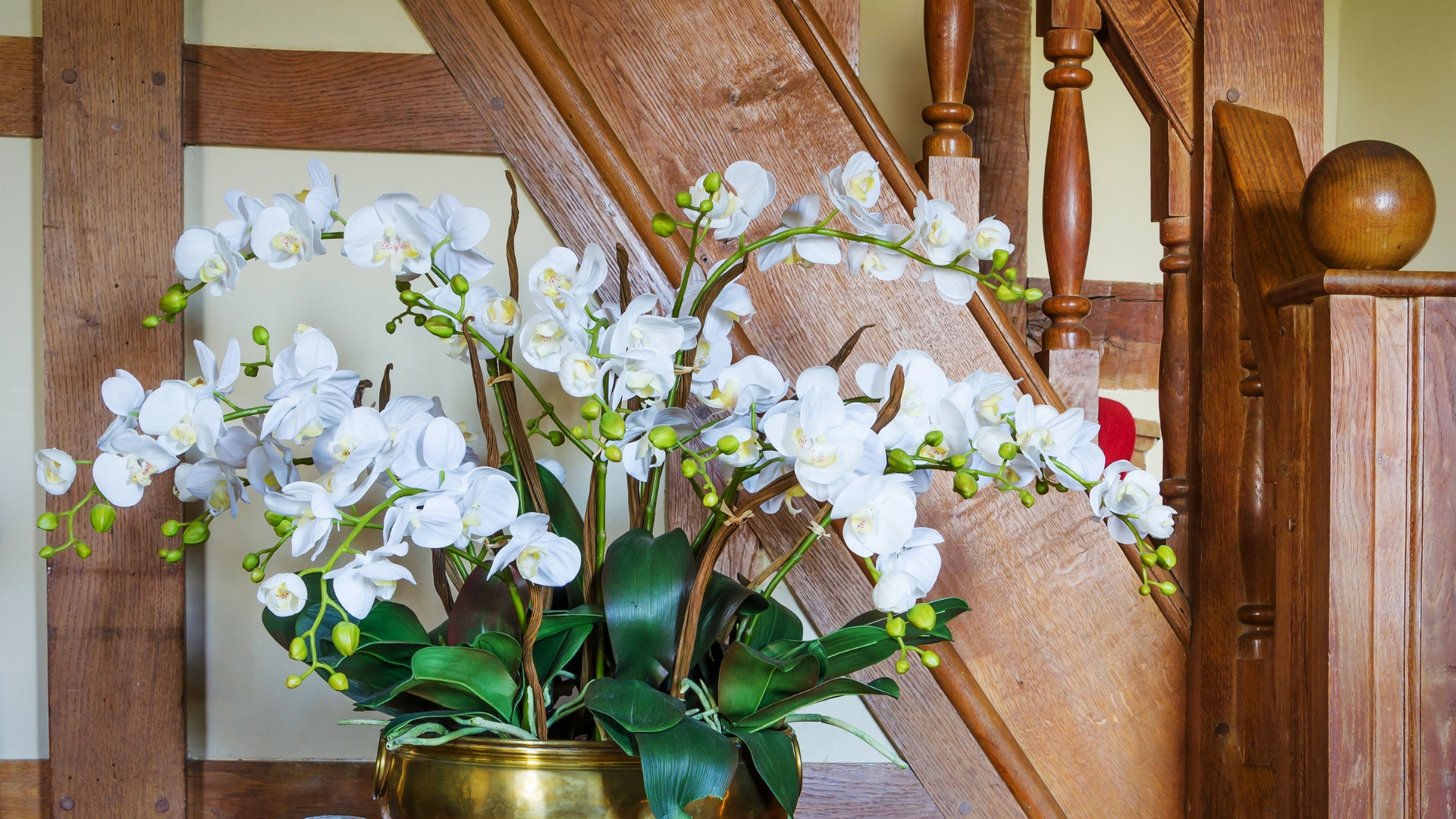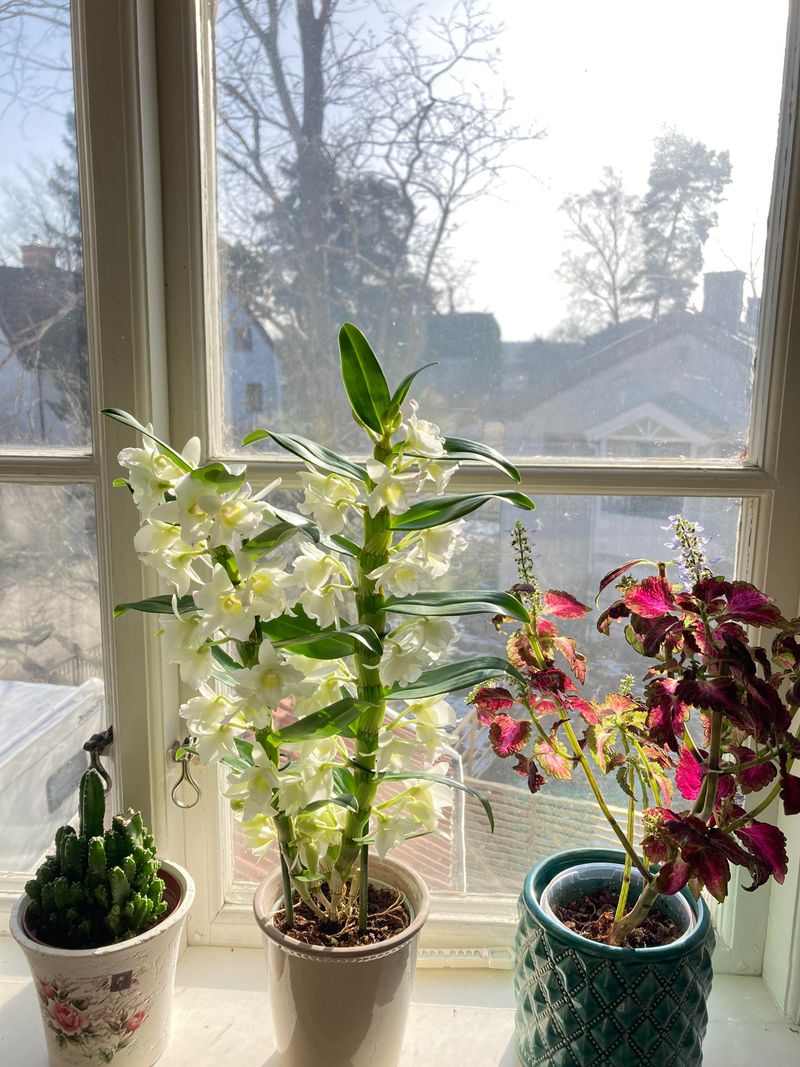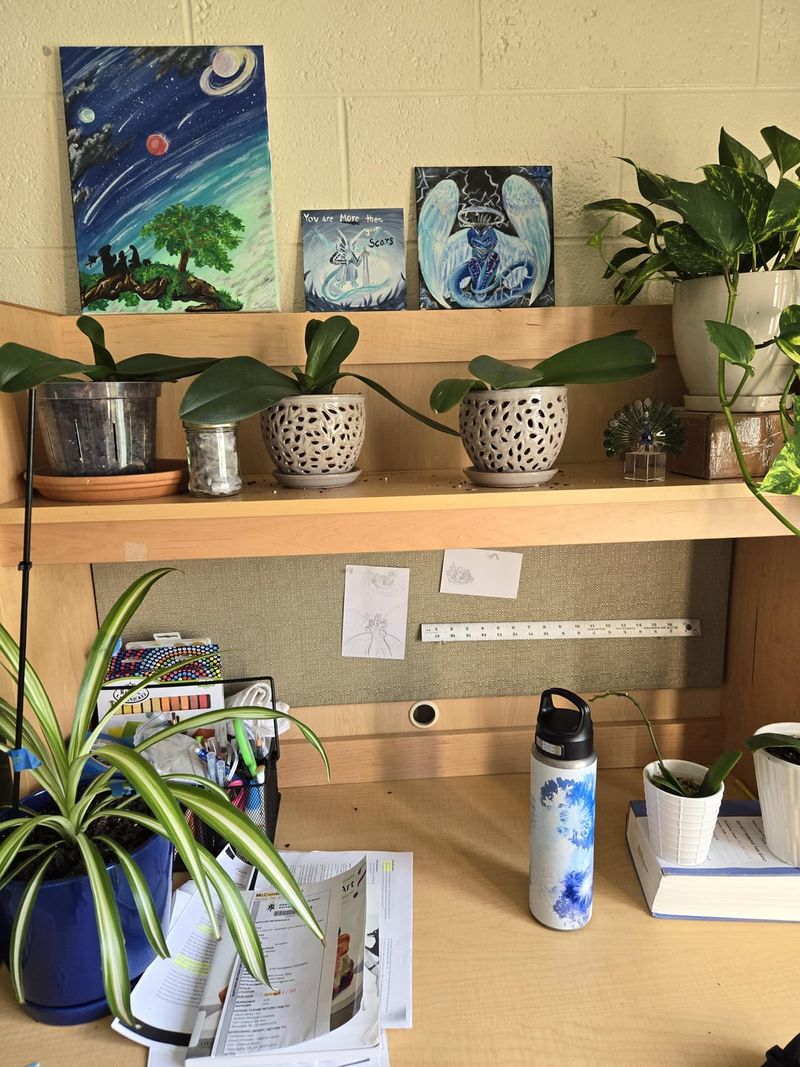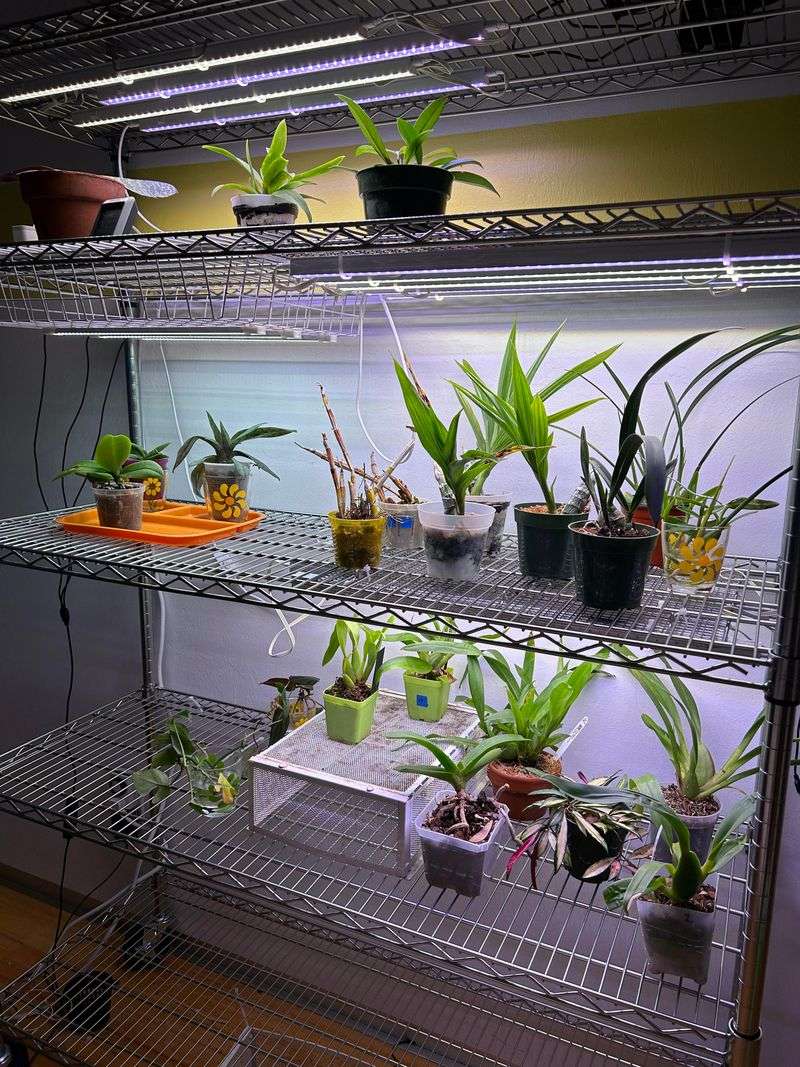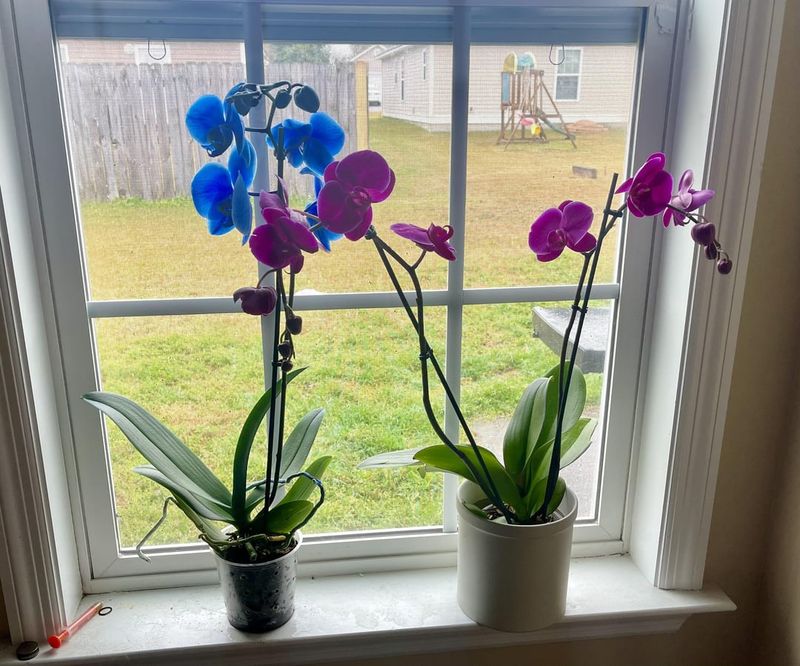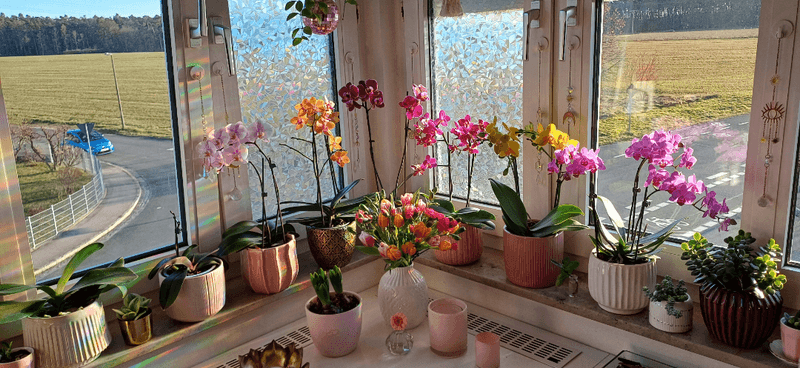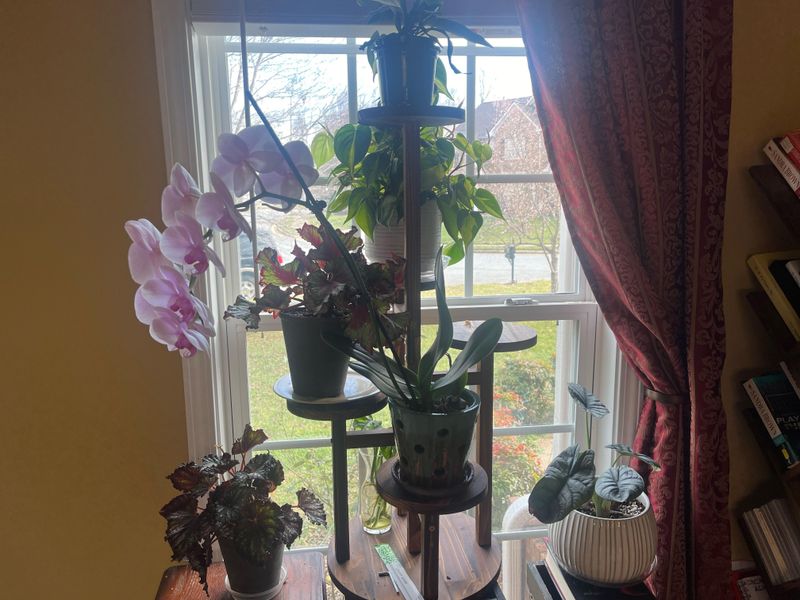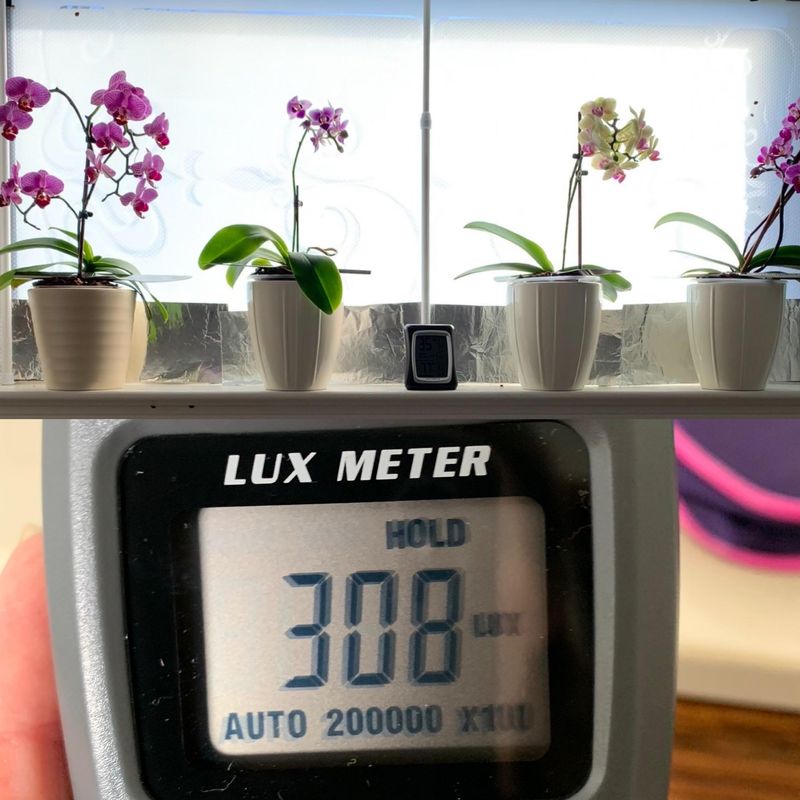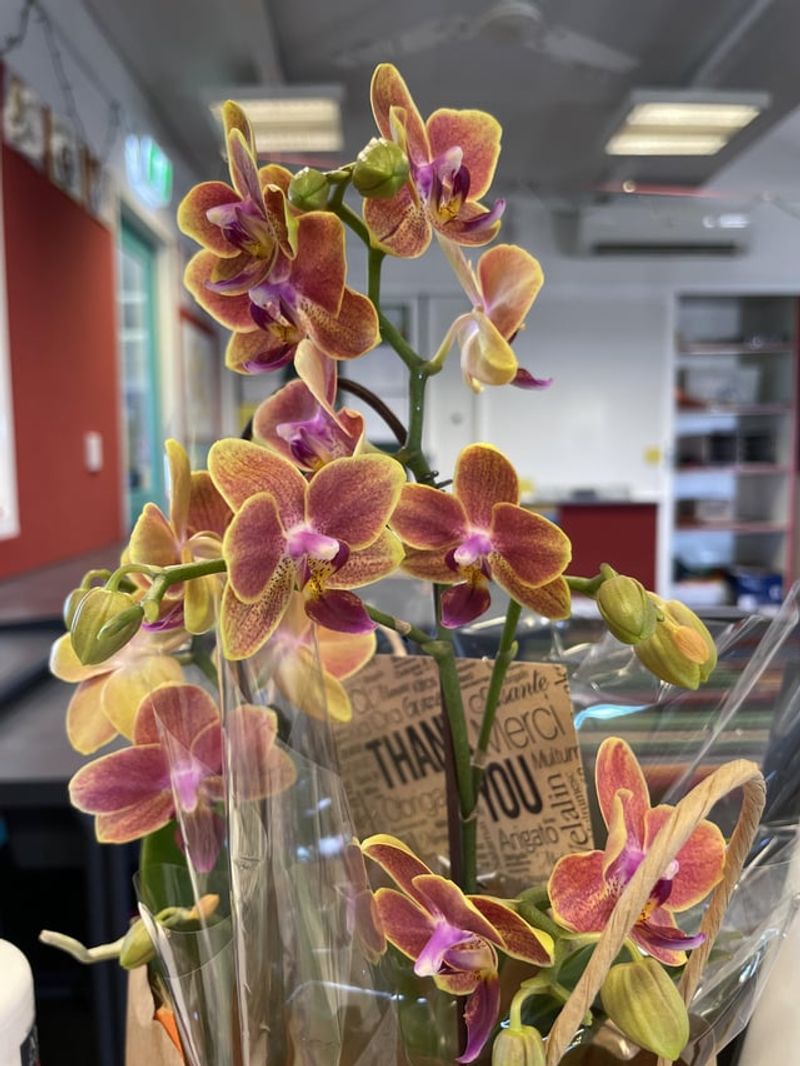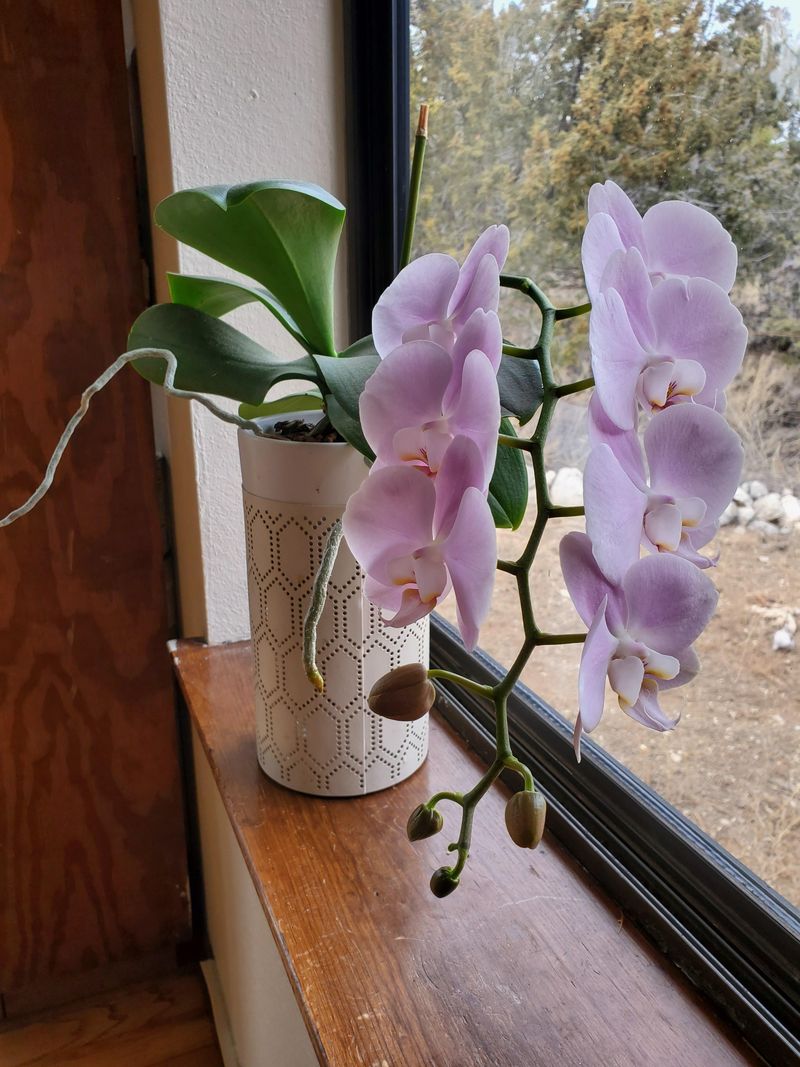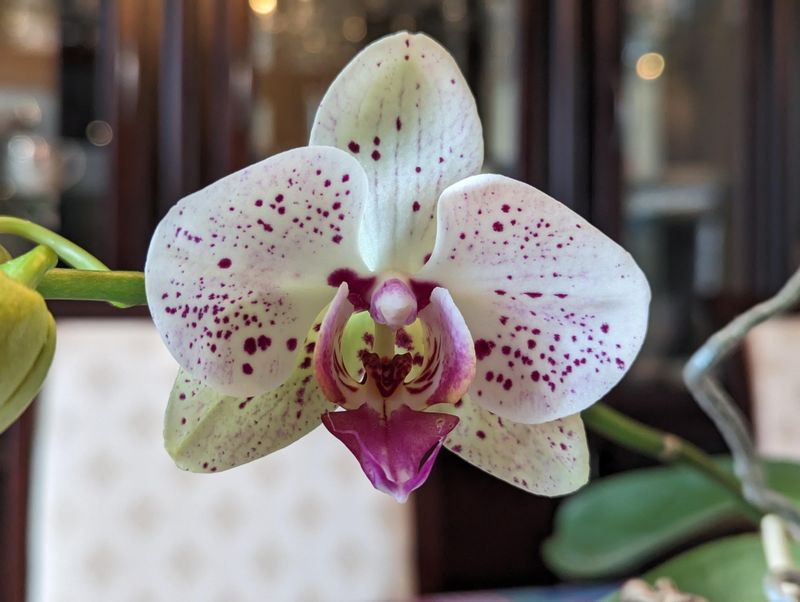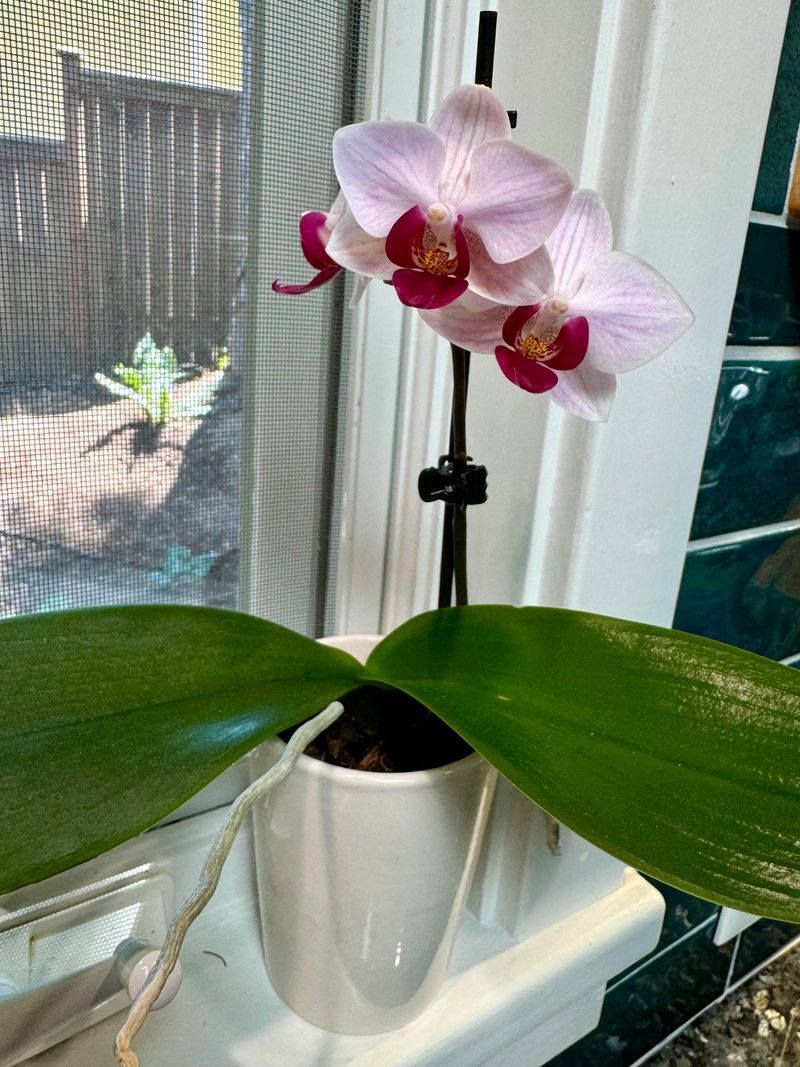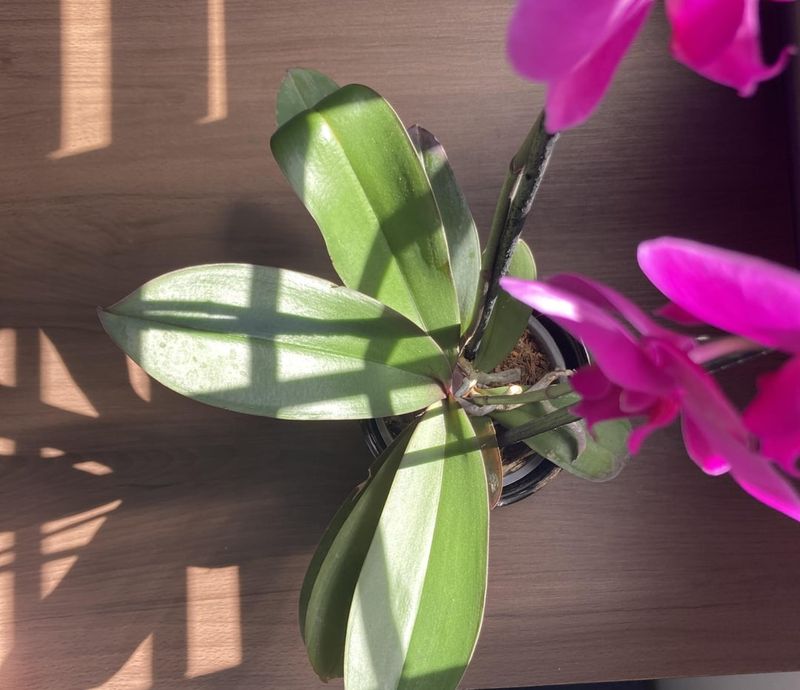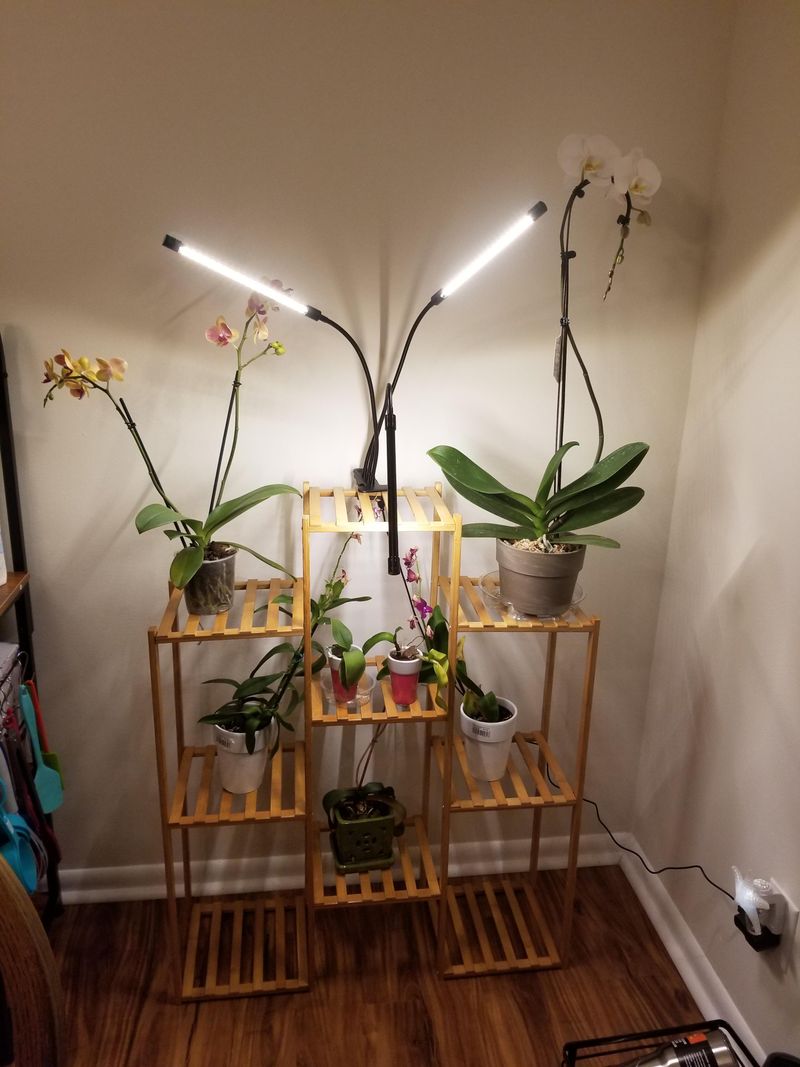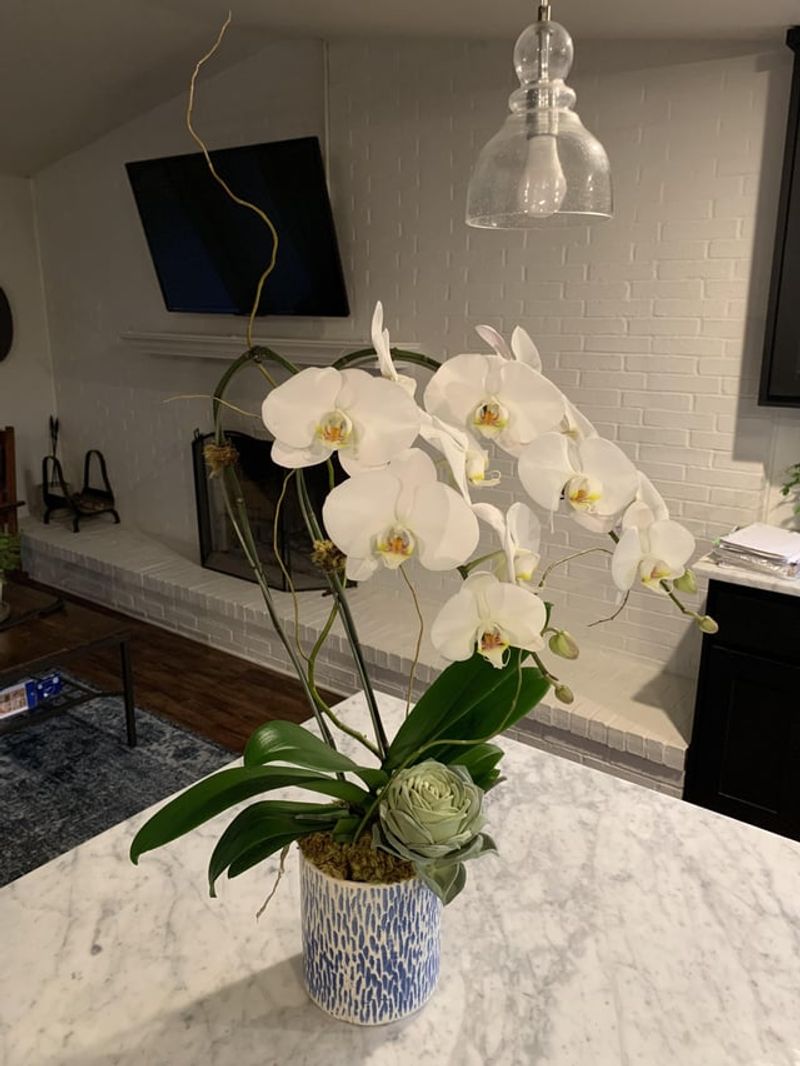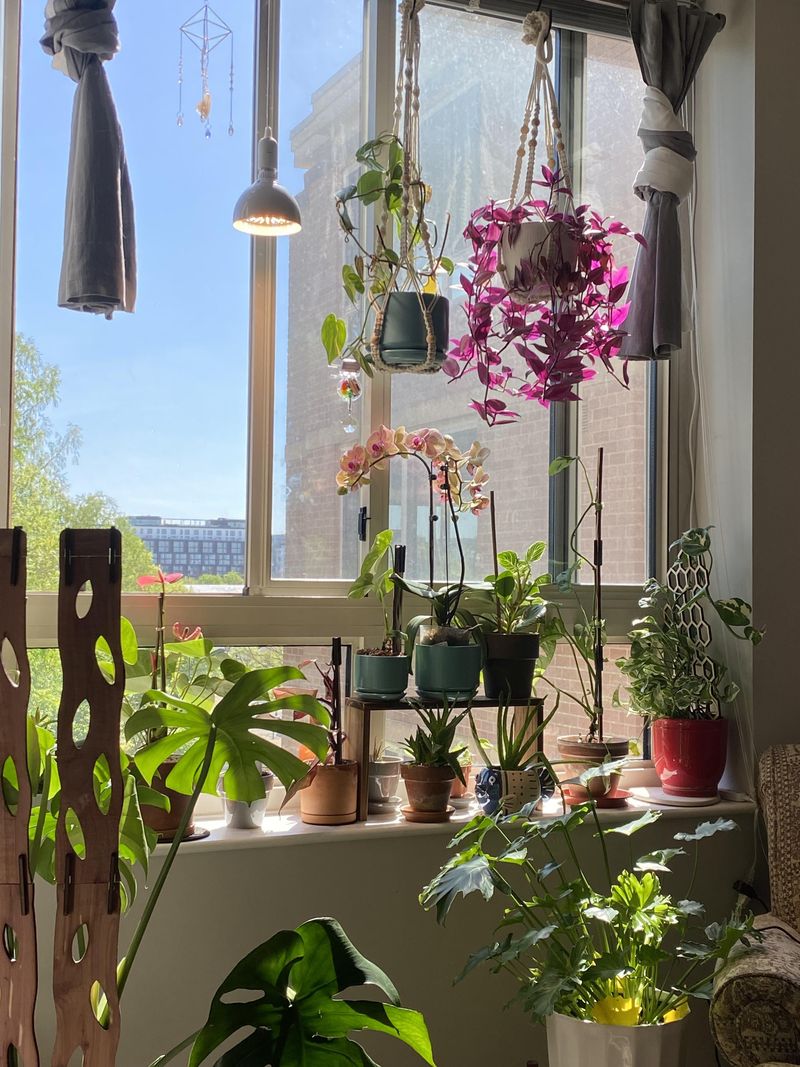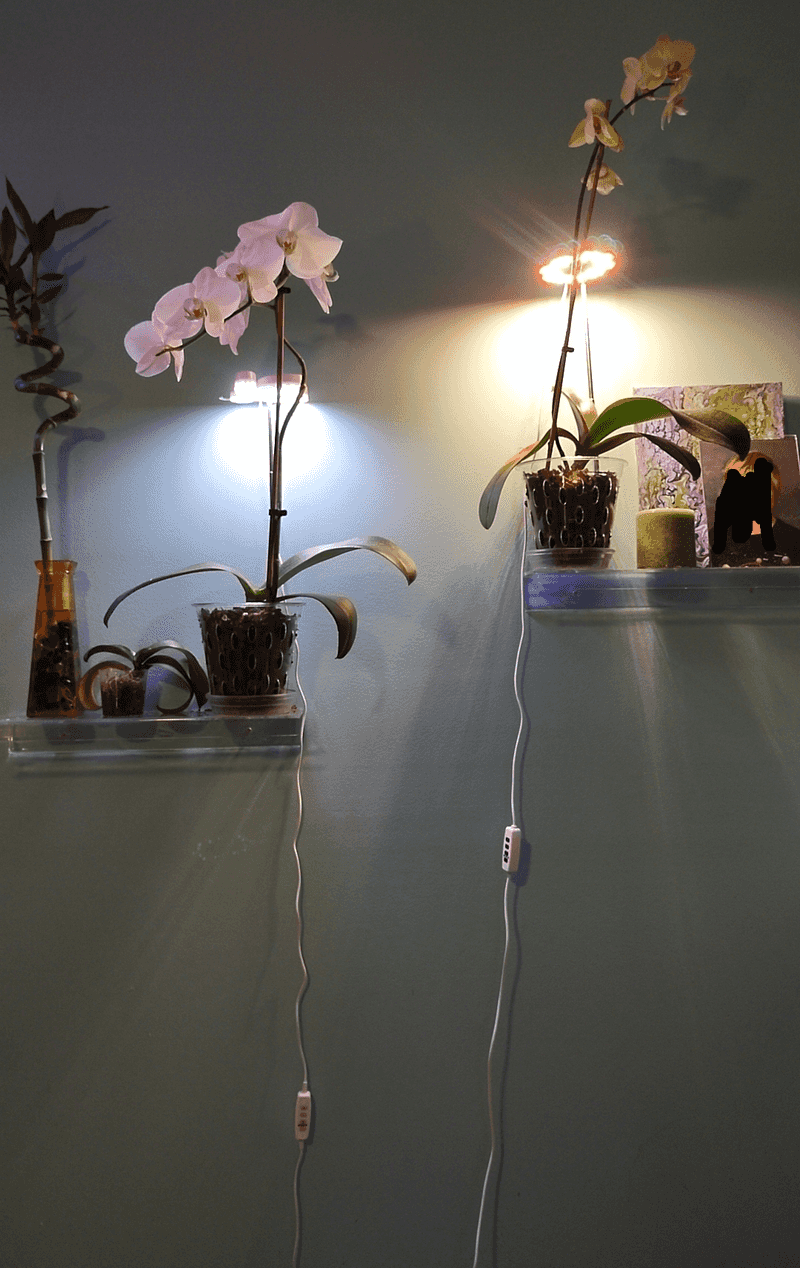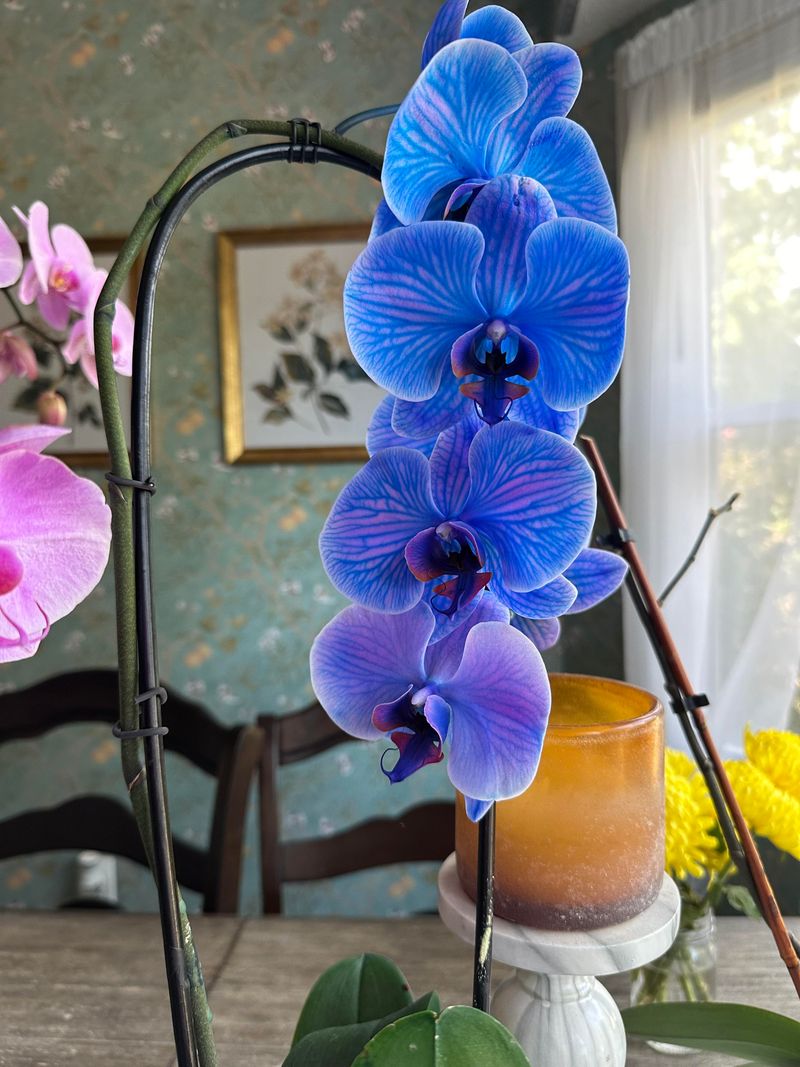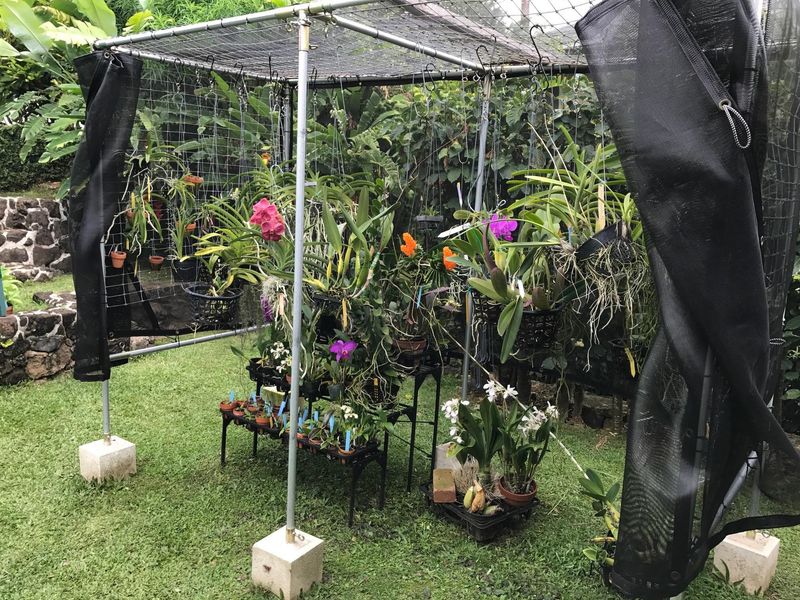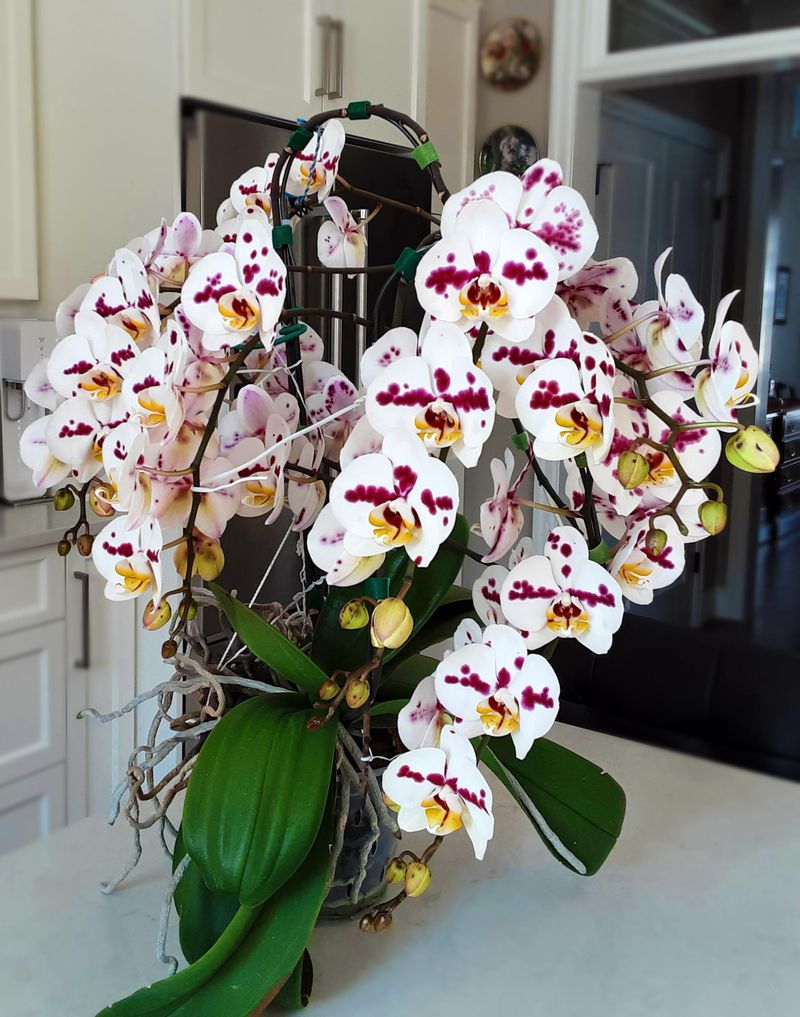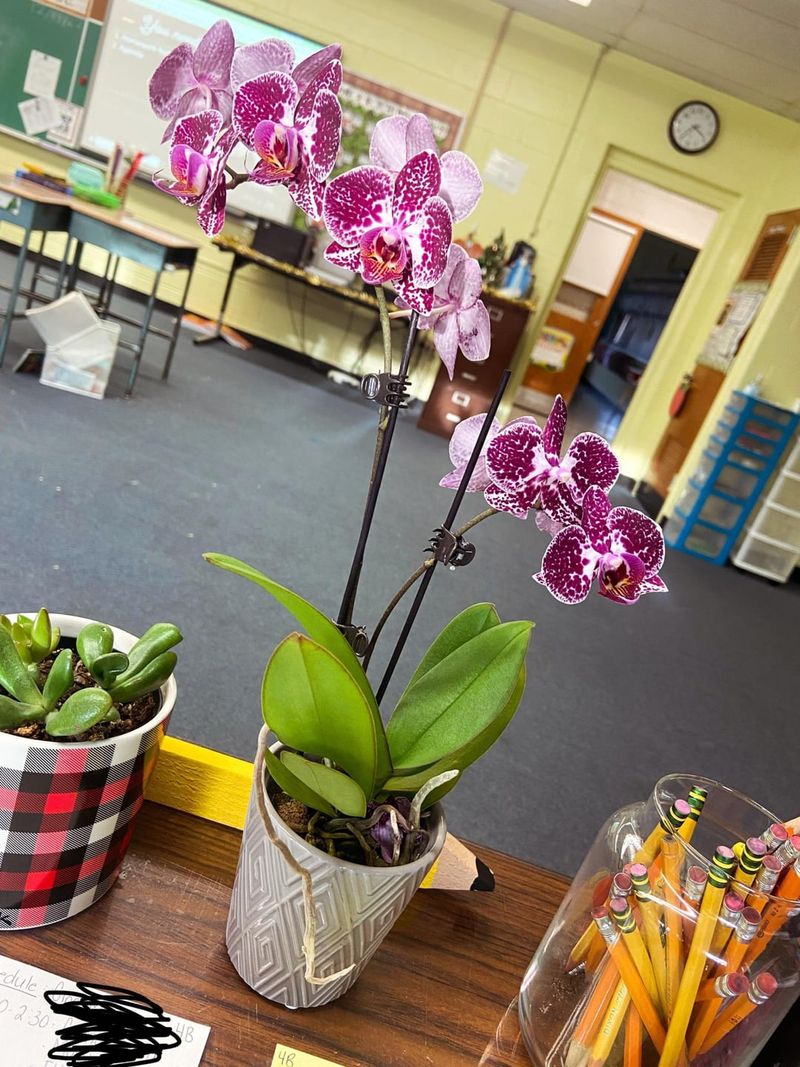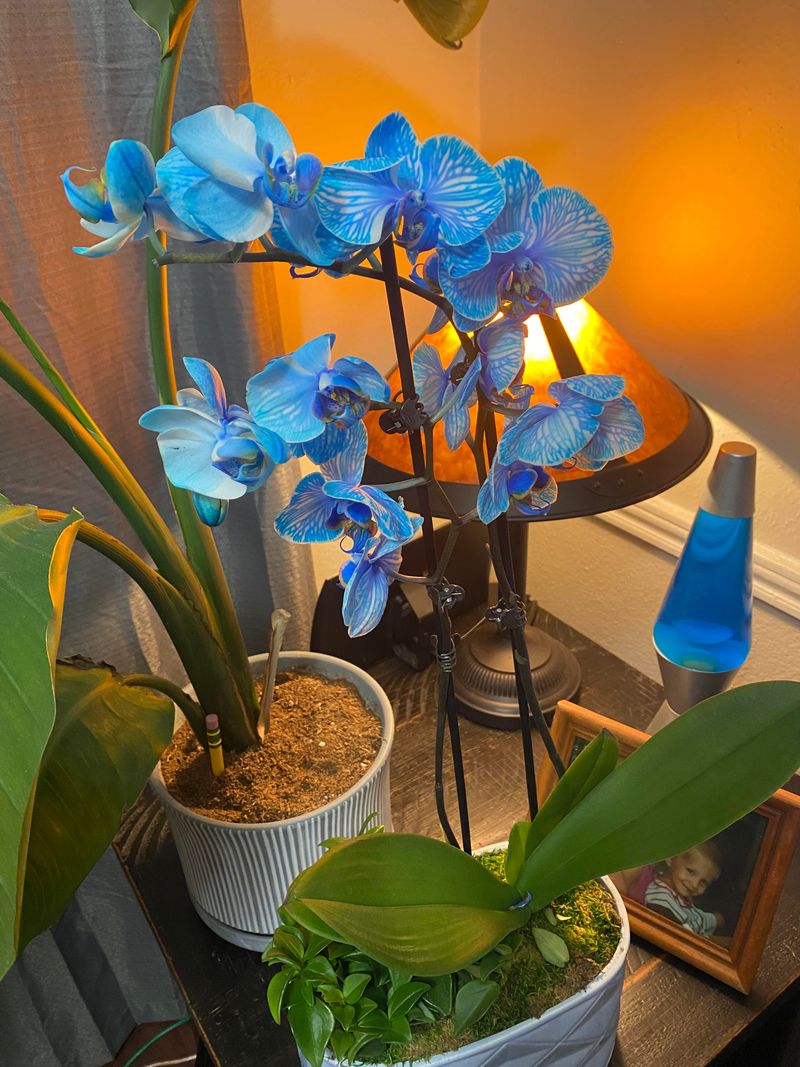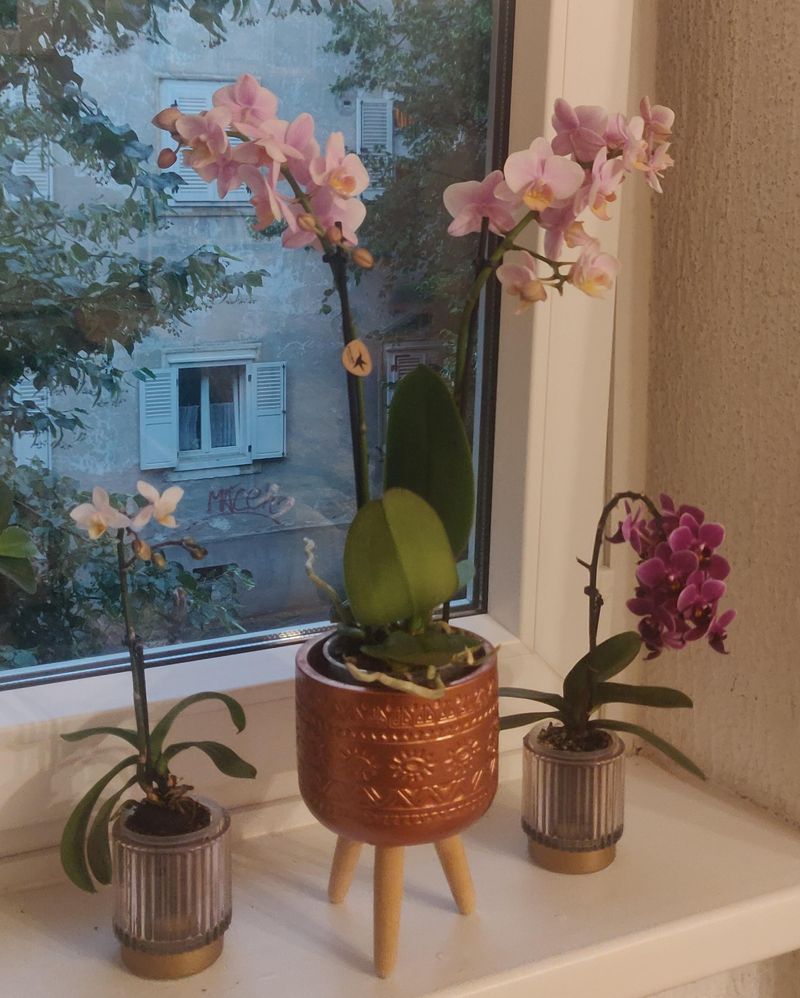Want your orchids to thrive and bloom like never before? Getting the right light is the secret to unlocking their full potential, and I’ve got the tips to help make it happen.
From natural sunlight to clever positioning, these simple steps can make all the difference in how your orchids look and grow. Trust me, once I figured this out, my blooms started showing up more than I expected!
Ready to give your orchids the perfect glow-up?
1. Natural Sunlight
Orchids love sunlight, but not too much of it. A sun-kissed morning with gentle rays streaming in through your window can be the perfect start for your orchids. Direct sunlight, especially during the harsh midday hours, could scorch their delicate leaves. Instead, opt for a spot where they can enjoy bright, indirect light.
East-facing windows are often ideal, offering a sweet balance of light without the heat. And don’t they just look stunning with that morning glow dancing on their petals? Make sure you rotate them occasionally for even growth!
2. Indirect Light
Indirect light is like a cozy blanket for your orchids. It’s gentle, consistent, and just what they need to flourish. Position them near windows with sheer curtains or blinds. This way, the light is filtered, providing an environment that mimics their natural habitat.
Harsh rays can be harmful, so this setup is a great alternative. Not only does it prevent potential leaf damage, but it also keeps their colors vibrant. Adjusting the curtains can help regulate the light exposure, keeping your orchids happy and healthy!
3. Artificial Grow Lights
When natural light is scarce, artificial grow lights can be your orchids’ best friend. These lights are designed to mimic the sun’s spectrum, providing essential wavelengths for orchids to photosynthesize and grow.
LED grow lights are energy-efficient and can be adjusted to offer the right intensity. Position them about a foot above your orchids for optimal results. Remember, different orchids have varying light needs, so tailor the light duration and intensity accordingly. Your orchids will thank you with stunning blooms!
4. East-Facing Window
An east-facing window is a haven for light-loving orchids. It offers gentle morning sunlight, which is ideal for photosynthesis without risking leaf burn. This orientation gives them the perfect balance of warmth and luminosity.
Place your orchids close enough to get the light, but not so close that the glass magnifies the sun’s intensity. Rotate the pots every few weeks to ensure even growth on all sides. This simple adjustment can make a significant difference in your orchids’ health and vigor.
5. South-Facing Window with Sheer Curtains
South-facing windows provide maximum light, perfect for orchids that love brightness. However, direct, intense sun can be too much. Hang sheer curtains to diffuse the light, giving your plants the full spectrum of sunlight without the burn.
This setup allows for extended light exposure, which many orchids thrive on. Keep an eye on how your orchids respond, as some may need slight adjustments. With this arrangement, you’re creating a sunlit paradise where your orchids can truly shine.
6. West-Facing Window
West-facing windows offer a warm, afternoon glow that can be beneficial for many orchid varieties. The key is to monitor the intensity because afternoons can get quite sunny. If the light seems too harsh, consider adding a layer of protection like sheer curtains or placing the orchids a bit farther from the window. This setup can help in enhancing their blooming cycle, giving them just the right amount of light to thrive!
7. Rotate Your Orchids
Rotating your orchids is a simple yet effective trick to ensure balanced growth. Every couple of weeks, give those pots a little spin. This practice helps all sides of the plant get equal light exposure.
Uneven light can lead to lopsided growth, which not only looks odd but can stress your plant. Noticing new growth on only one side? It’s time for a rotation! Your orchids will grow evenly and bushier, enhancing their natural beauty.
8. Light Meters
Digital light meters are handy gadgets for any orchid enthusiast. They measure the light intensity, helping you position your orchids in just the right spot.
Too much or too little light can impact blooming, so using a meter assists in finding that sweet spot. With this tool, you can adjust their placement based on precise data, rather than guesswork. It’s like giving your orchids the VIP treatment by understanding their exact needs.
9. Avoid Direct Midday Sun
Direct midday sun can be too intense for many orchids, potentially scorching leaves and stunting growth. Instead, provide shade during these hours.
Strategically placed houseplants or curtains can act as sun buffers. This approach simulates the dappled light of a jungle canopy, creating a natural feel that orchids adore. By shielding them during peak sun, you encourage healthy, vibrant growth, and prevent leaf damage.
10. Use Reflective Surfaces
Reflective surfaces, like mirrors or white walls, can amplify the available light in a room. Positioning orchids near these surfaces helps in bouncing light around, maximizing exposure.
This technique is especially useful in rooms with limited natural light. Just be cautious not to create hot spots that might burn leaves. By enhancing your orchids’ light with reflections, you give them a bright and airy environment to bloom their best.
11. Seasonal Light Adjustments
Orchids have different light needs depending on the time of year. In summer, they might need a bit more shade, while winter calls for maximizing any available light.
Keeping a calendar to track seasonal changes can help you adjust their light exposure appropriately. As days get shorter or longer, shifting their position ensures they continue to thrive throughout the year. Adapting to the seasons means happier, healthier orchids.
12. Filtered Light Options
Filtered light, like that which comes through tree leaves or fabric screens, can be a treat for orchids. This type of light mimics their natural habitat, offering a soft glow without harshness.
Creating this effect at home can be as simple as using lace curtains or placing orchids under a plant with bigger leaves. It’s about replicating the gentle, dappled light they’d find in the wild, promoting vigorous growth and vibrant blooms.
13. Top Lighting Techniques
Top lighting, where light shines down from above, can be particularly effective for orchids on shelves. This approach mimics natural sunlight from above, encouraging upward growth.
It’s important to ensure the light isn’t too harsh, which can be adjusted by using diffusers or softer bulbs. This method is great for showcasing your orchid display, turning it into a spotlight attraction while providing the necessary light for growth.
14. Light Duration Control
Controlling the light duration is crucial for orchid health. Using timers ensures they receive consistent light, mimicking day and night cycles.
Most orchids thrive on about 12-14 hours of light daily. During shorter winter days, extending light with artificial sources is beneficial. This consistency helps in regulating their internal clocks, leading to healthier growth and timely blooming.
15. Install Light Shelving
Light shelves are a fantastic way to grow a variety of orchids in limited space. These shelves come equipped with built-in lights, ensuring each level receives adequate illumination.
It’s perfect for those with a collection of orchids that need varying light conditions. By adjusting the height and intensity of lights on each shelf, you can cater to specific orchid needs, creating a personalized orchid oasis right in your living room.
16. Light and Temperature Balance
Achieving the right balance between light and temperature ensures orchids don’t get stressed. Light increases warmth, so monitor room temperature, especially in enclosed spaces.
If it feels too warm, consider fans or opening windows to maintain airflow. Orchids appreciate a stable environment, and balancing these elements promotes vigorous growth. It’s like setting up a comfy, cozy home for your floral friends, where they can flourish without a hitch.
17. Move Orchids Seasonally
Moving orchids to different locations based on the season can optimize their light exposure. In summer, they might thrive outdoors in the shade, while winter calls for indoor warmth and light.
Observing how your orchids respond to changes will guide you in finding the perfect spots. This adaptability is key in ensuring they receive the right light throughout the year, resulting in robust growth and vibrant blooms.
18. Light Intensity Monitoring
Using smartphone apps to monitor light intensity can be a game-changer for orchid care. These apps measure the amount of light in specific areas, helping you adjust your orchids’ positions.
With this data, you ensure they’re neither starved of light nor exposed to too much. It’s like having a personal assistant who ensures your orchids live in their optimal light conditions. Regular checks with these apps can lead to thriving plants with minimal guesswork.
19. Balance Between Sun and Shade
Finding the balance between sun and shade is essential for orchid health. Some days might be too bright, while others too dim, so having a flexible setup is beneficial.
Outdoor setups with umbrellas or strategically placed shade plants can help regulate this balance. Indoors, moving orchids closer or farther from windows as needed keeps them content. This method ensures they receive just the right amount of light, no matter the weather.
20. Light Reflectors
Light reflectors can maximize the available light, making a dim room feel bright. Reflectors bounce additional light onto your orchids, ensuring they get enough to grow and bloom.
These can be DIY projects using foil or mirrors, placed strategically around the plants. By enhancing the light without increasing intensity, you create a nurturing environment that orchids love. It’s a clever, budget-friendly way to boost their light intake!
21. Transitioning Light Exposure
Transitioning orchids to more light should be a gradual process. Start with an hour or two and slowly increase the duration over days or weeks.
This gradual increase helps prevent shock and allows them to adjust comfortably. Using adjustable curtains or blinds, you can fine-tune the amount they receive each day. This method supports healthy adaptation and leads to thriving, resilient orchids.
22. Use of Shade Cloth
Shade cloths are perfect for outdoor orchid setups, providing a gentle, filtered light. They shield orchids from harsh rays while allowing enough light for growth.
These cloths are easy to install and come in various densities to control light levels. Perfect for garden setups, they ensure orchids enjoy the benefits of sunlight without the risk of burn. Whether draped over a pergola or a simple frame, they make a lovely addition to your orchid care routine.
23. Weather-Based Light Adjustment
Adjusting light based on the weather keeps orchids flourishing. On cloudy days, they might need to be closer to windows or under grow lights, while sunny days call for some shade.
A quick check on your weather app helps plan these changes. This proactive approach ensures your orchids always have optimal light, enhancing their growth regardless of outside conditions. It’s like being the weather manager for their little micro-environment.
24. Use Light Diffusers
Light diffusers soften harsh light, creating an even, gentle distribution perfect for orchids. Hanging diffusers can transform intense beams into a mellow, nurturing glow.
These are especially useful in areas with strong direct light, preventing any potential leaf damage. Diffusers enhance the room’s ambiance while catering to your orchids’ need for gentle light, making your space feel both warm and welcoming.
25. Adjusting for Indoor Light Sources
Orchids often compete with indoor lights like lamps and overhead fixtures. Position them strategically to ensure they benefit from these light sources without direct exposure.
Consider the type and intensity of light in each room, as well as how frequently these lights are used. By aligning your orchids with these indoor sources, you create a balanced light environment that supports their growth and flowering.
26. Natural Light Simulation
Smart lighting systems can simulate natural daylight cycles, ideal for orchid growth. These systems adjust light intensity and spectrum throughout the day, mimicking sunrise to sunset.
This technology provides consistency year-round, even when natural light is lacking. It’s like bringing the best of the outdoors inside, ensuring your orchids get the light they need to thrive, whatever the season.
27. Light Placement Creativity
Creativity in light placement can transform your orchid display into an art piece. Think outside the box with hanging lights, chandeliers, or unique shelving units.
This not only highlights your orchids but also enhances the room’s decor. It’s about merging functionality with aesthetics, creating a space where your orchids are both nurtured and admired. This method turns light care into an exciting design project.
28. Light Intensity Variation
Varying light intensity can mimic natural conditions, benefiting your orchids. Dimmable lights allow you to adjust the brightness to suit their needs at different times.
This flexibility supports orchids during their flowering phase, as well as during rest periods. It’s like providing a tailored lighting experience, helping them adapt and thrive through all stages of growth.

